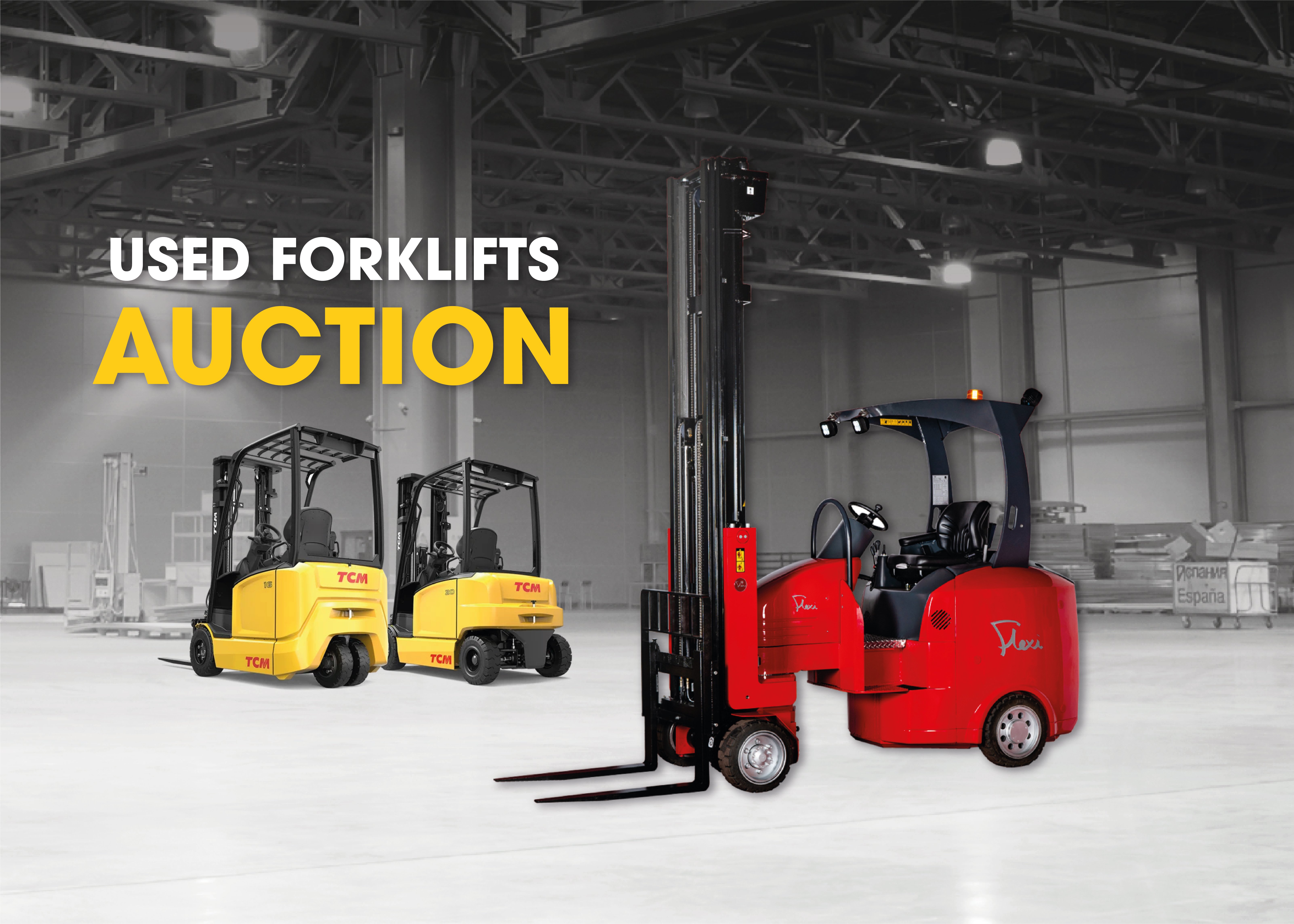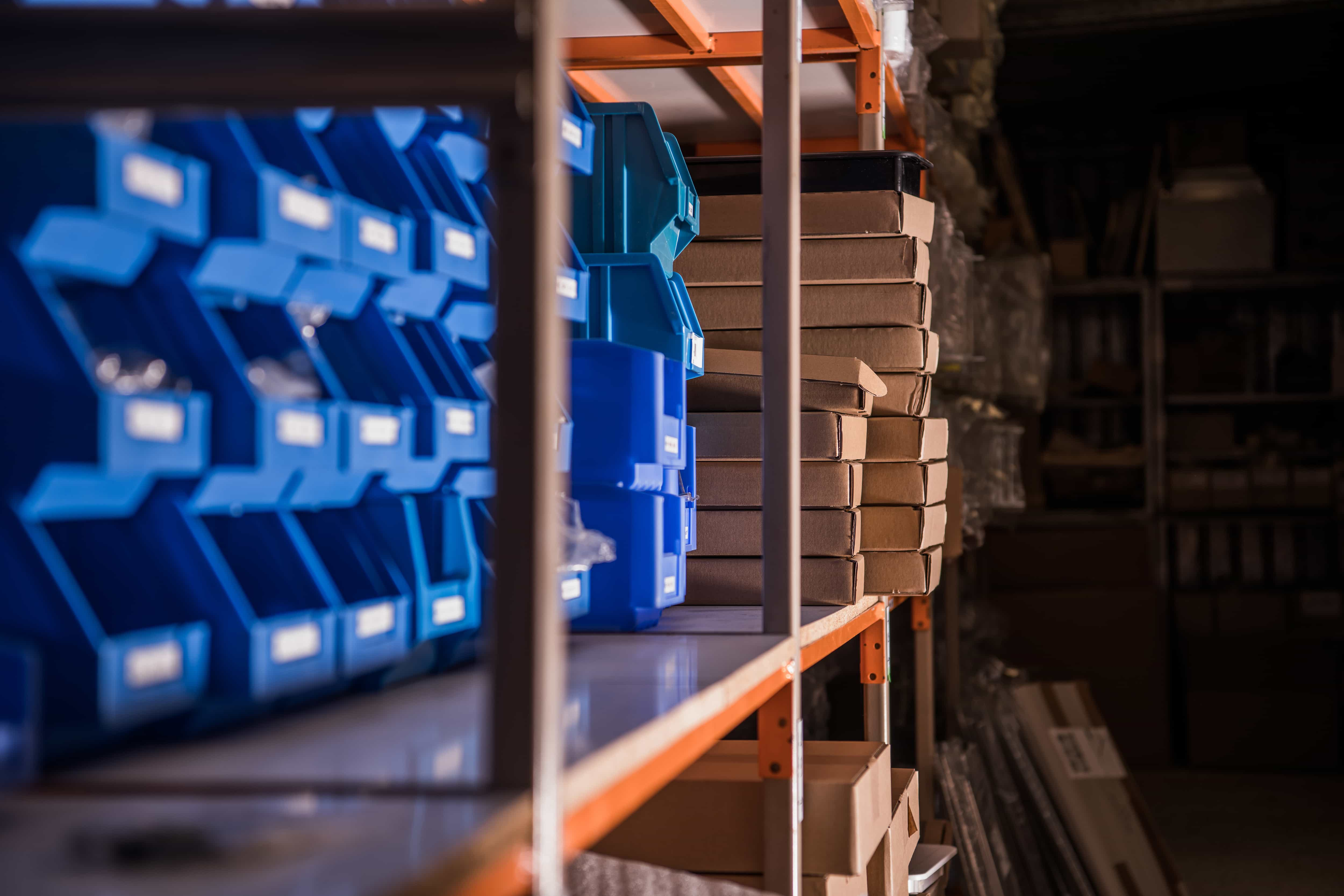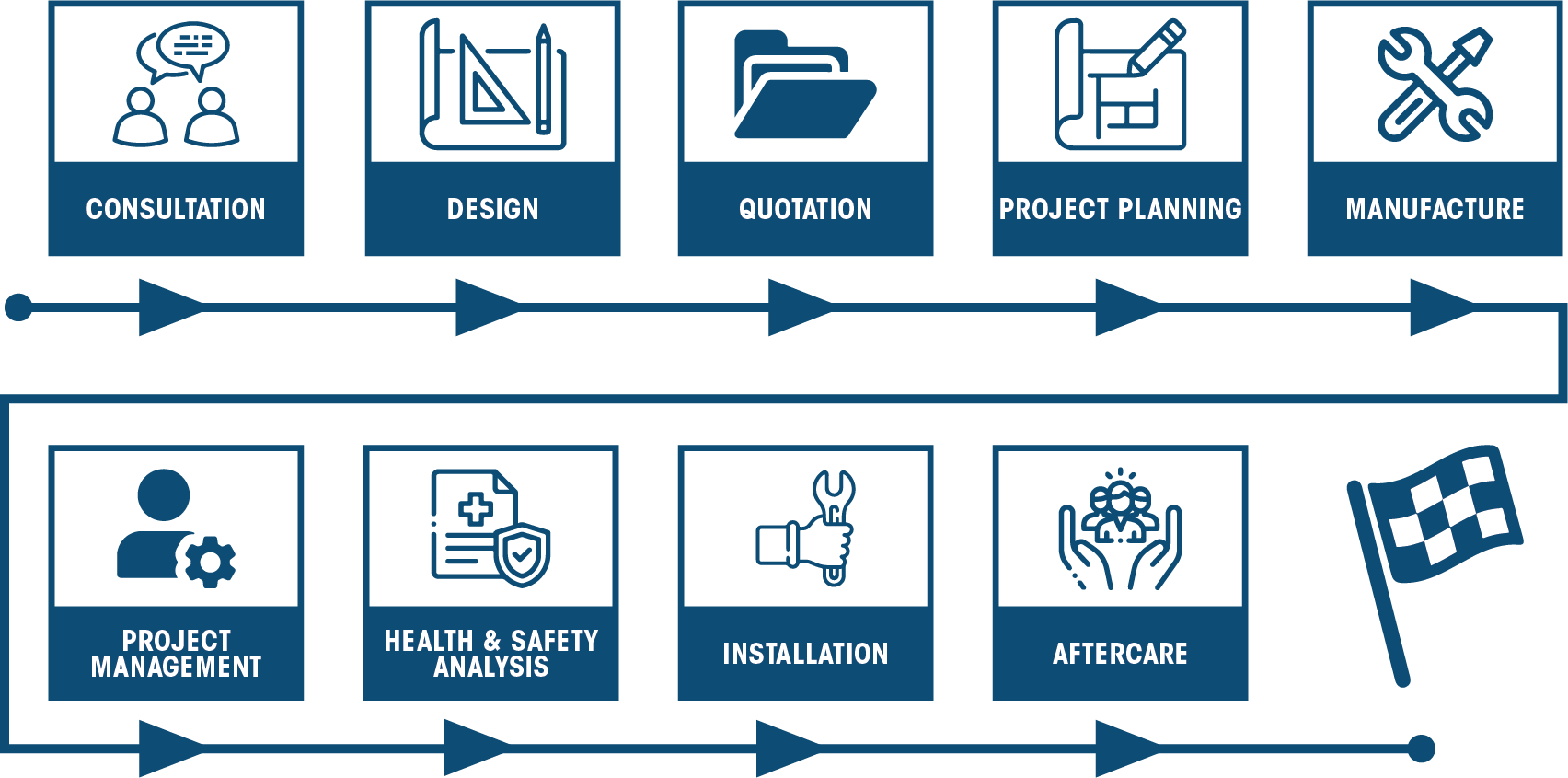
Racking systems
Choosing the right racking system for your industrial area and warehouse
SEMA approved racking inspections
Warehouse storage systems are an integral element of all warehouses, but the types of warehouse racking available for businesses to use vary depending on your companies requirements. As not all warehouse storage systems are the same, it’s important to look at the different options and find the right warehosue racking that works best for your business.
As a specialist in the design, fabrication and installation of racking systems, Altegra are competitively priced and backed by multiple nationally recognised accreditations.
Whatever your projects scope is, our friendly team will ensure that you are able to maximise the potential of your storage space by designing a warehouse racking system that fits with the way which your business operates.
Selecting the right pallet racking system needs to be designed to meet your businesses exact requirements; therefore a vital storage racking system needs to be strategically planned to make the most efficient use of the space being filled.
Working with businesses of all sizes, we understand the important aspects in achieving and optimising efficiency, productivity, and most importantly, safety within all commercial environments.
We offer SEMA Approved Racking Inspections and also design, fabricate and install all racking systems to the highest of standards.

Handling your project from start-to-finish
As well as providing a full-scale design, installation and fabrication service for racking systems, we can help further enhance all racking systems by offering a variety of different accessories.

Types of commercial racking
Pallet Racking
Pallet racking is a versatile and popular storage solution that allows for the efficient storage of goods on pallets. It is suitable for businesses with a large volume of uniform palletized goods, providing easy access and maximizing vertical space.
Maximised Storage Space: Pallet racking allows for the efficient use of vertical space, maximizing storage capacity. This is crucial for businesses with a large volume of goods, as it reduces the need for expansive floor space.
Accessibility and Selectivity: Pallet racking systems provide easy access to stored goods. Selective pallet racking, in particular, allows for direct access to every pallet, making it simple to locate and retrieve specific items.
Versatility: Pallet racking is versatile and can accommodate a wide range of pallet sizes and types. This flexibility is essential for businesses with diverse product lines.
Improved Inventory Management: With a well-organised pallet racking system, inventory management becomes more streamlined. It is easier to track stock levels, manage restocking, and implement efficient picking processes.
Enhanced Efficiency: Pallet racking systems are designed to facilitate quick and efficient loading and unloading of goods. This improves overall warehouse efficiency, reducing the time and labour required for material handling.
Cost-Effective: Pallet racking is a cost-effective storage solution compared to alternative methods. Its design allows for high-density storage without the need for extensive building expansions.
Adjustable Configurations: Many pallet racking systems are adjustable, allowing for easy reconfiguration to accommodate changes in inventory size or type. This adaptability makes it a long-term and scalable storage solution.
Safety Features: Pallet racking systems can be equipped with various safety features, such as rack guards, end protectors, and safety signage, ensuring a secure working environment for warehouse personnel.
Durability and Longevity: Pallet racking systems are typically constructed from durable materials, ensuring a long lifespan. This durability makes them a sound investment for businesses looking for a reliable storage solution.
Compatibility with Automation: Pallet racking systems can be integrated with automation technologies, such as conveyor systems and robotic palletising, further improving efficiency and reducing reliance on manual labour.
Compliance with Industry Standards: Well-designed pallet racking systems adhere to industry standards and regulations, ensuring that your storage solution meets safety and quality requirements.
Cantilever Racking
Ideal for the storage of long, bulky items such as lumber, pipes, and furniture. Cantilever racking allows for easy loading and unloading of items of varying lengths without the constraints of vertical obstructions.
Optimal Storage for Long Items: Cantilever racking is designed specifically for the storage of long and bulky items such as lumber, pipes, steel bars, or furniture. It allows for easy access to items of varying lengths without the constraints of vertical obstructions.
Easy Loading and Unloading: The open-front design of cantilever racking facilitates straightforward loading and unloading of items. Forklifts or other material handling equipment can easily access the stored goods, minimising handling time.
Versatility in Storage: Cantilever arms are adjustable, providing flexibility to store items of different lengths and sizes. This adaptability is crucial for businesses dealing with a variety of product dimensions.
High Storage Density: Cantilever racking optimises vertical space efficiently, enabling high-density storage of long and bulky items. This is particularly beneficial for warehouses with limited floor space.
Reduced Risk of Damage: The design of cantilever racking minimises the risk of damage to stored items. Items are easily accessible, reducing the likelihood of accidental impacts during loading and unloading.
Customisable Configurations: Cantilever racking systems can be customised to suit specific storage needs. This includes adjusting the height of arms, choosing single-sided or double-sided configurations, and adapting the system to the available space.
Enhanced Accessibility: Cantilever racking allows for direct access to each individual item, eliminating the need to move other items to reach a specific one. This makes it easier to locate and retrieve goods quickly.
Cost-Effective Storage Solution: Cantilever racking is a cost-effective solution for storing long and bulky items, as it eliminates the need for specialised storage equipment or excessive floor space.
Ideal for Irregularly Shaped Items: The lack of front columns or vertical obstructions makes cantilever racking suitable for irregularly shaped items that may not fit well on traditional pallet racking systems.
Improved Safety: Cantilever racking can be equipped with safety features such as end stops, column protectors, and aisle guards to enhance the safety of both stored items and warehouse personnel.
Efficient Space Utilisation: Cantilever racking efficiently utilises space by eliminating the need for vertical supports in the aisles. This allows for better use of floor space and overall warehouse organisation.
Scalability: Cantilever racking systems can be easily expanded or reconfigured to accommodate changes in storage needs, making it a scalable solution for growing businesses.
Narrow Aisle Racking
Narrow Aisle Racking allows for significantly narrower aisles compared to traditional racking systems, maximising the use of available floor space and creating high-density storage.
Vertical Space Utilisation: The design of narrow aisles enables efficient use of vertical space by allowing for higher rack levels, making it ideal for warehouses with tall ceilings.
Increased Storage Capacity: By reducing aisle width, narrow aisle racking increases the overall storage capacity of the warehouse without the need for expansion.
Improved Efficiency in Picking and Retrieval: Narrow aisles reduce the travel distance for forklifts or automated picking equipment, resulting in faster and more efficient picking and retrieval processes.
Space Savings and Cost Efficiency: Narrow aisle configurations make better use of available floor space, potentially eliminating the need for costly warehouse expansion or relocation.
Adaptability to Various Storage Systems: Narrow aisle setups can be used with various storage systems, such as selective racking or push-back racking, offering flexibility based on specific storage requirements.
Compatibility with Automation: The reduced aisle width makes narrow aisle racking suitable for automated storage and retrieval systems (AS/RS), improving overall warehouse automation and efficiency.
Customisable Configurations: Narrow aisle racking systems can be tailored to fit the specific needs of the stored items, allowing for adjustments in height, aisle width, and other dimensions.
Enhanced Inventory Control: The organised nature of narrow aisle racking facilitates better inventory control and management, making it easier to track stock levels and reduce errors in picking.
Reduced Energy Consumption: With shorter travel distances for material handling equipment, narrow aisle racking contributes to reduced energy consumption, leading to cost savings over time.
Improved Safety Features: Narrow aisle racking can include safety features such as proximity sensors, guide rails, and floor markings to enhance the safety of both stored items and personnel.
Utilisation of Specialised Forklifts: Narrow aisles are designed to accommodate specialised narrow aisle forklifts, which can navigate the confined space efficiently, further improving material handling efficiency.
Cost-Effective Alternative to Expansion: Implementing narrow aisle racking provides a cost-effective solution to increased storage demands without the need for expanding the physical footprint of the warehouse.

